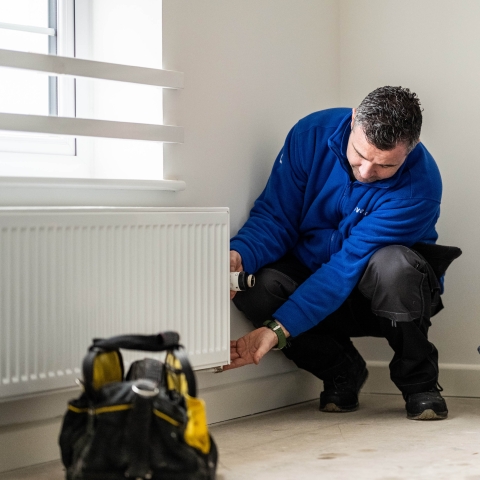Radon is a naturally occurring gas with no colour, taste, or smell. It comes from small amounts of Uranium present in rock, such as granite, sandstone, and limestone and enters buildings from the ground giving a small dose of radiation to the occupants. A continued high level of exposure to radon over an extended period has been linked to an increased risk of lung cancer, so can put you at risk of serious health issues.
If you have devices installed to protect you safe from radon, make sure these are switched on and working. As the cost of living rises some are turning safety devices off to try and save money, however devices like this cost very little to run and are essential in helping you to stay safe. Read more about the cost of safety devices.
The images and analytical information used in this on this page have been provided by the UK Radon - Radiation Protection Services of UKHSA (UK Health Security Agency).
Further information on UKHSA and radon can be found here.
-
We are exposed to radon continually throughout our lives and it accounts for over 50% of the radiation exposure we experience.
In the UK the highest levels of radon are found in South West, especially Devon, Cornwall and parts of Somerset. This means it is important for our customers to be aware of the potential risks radon pose.
-
Radon gas penetrates through cracks and fissures in the ground and properties.
A combination of factors can affect the amount of radon that enters the structures.
Heating and certain ventilation flows can result in a reduction in the air pressure within the building. This in turn can draw radon up from the ground into the property.
Lack of ventilation can result in the radon remaining in the property. The level of radon in a property varies over time, by day, by month and seasons.
The level will also alter between basements, ground floor and upstairs rooms.
-
Monitoring of radon is undertaken with a Passive Radon Test Kit that includes two detectors.
These detectors are left in place, usually in the lounge and master bedroom, for a minimum period of three months. Once collected the detectors are analysed and a Radon Level can be obtained, offering both actual readings and importantly, an Annual Average. If the Annual Average exceeds the Action Level, remedial equipment can be fitted to reduce the levels.
The type of remediation measures will vary by location and level detected. This may result in one property being fitted with a simple Positive Input Ventilation System whilst an adjacent property may require a more comprehensive installation of an External Sump and Fan System.
-
The Government measurement of the level of radon in homes is shown in Becquerels per cubic metre, usually shown as Bq m3.
The national average radon level in the home is 20 Becquerels m3 (20Bq m3) and the Actionable Level is 200Bq m3.
At or above this level, the Government agency UK Health Security Agency (UKHSA) recommends actions are undertaken to reduce the radon incidence to below actionable level.
Useful information

Radon safety standard

Gas safety
Your safety
For more information on how to stay safe in your home, visit Your Safety.